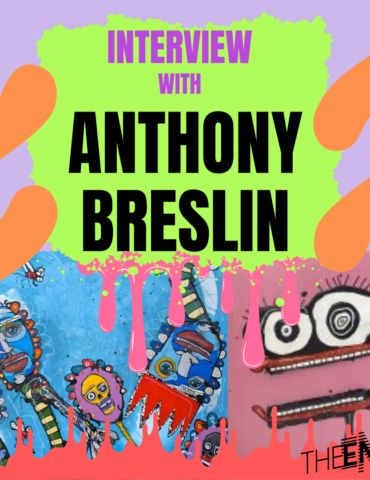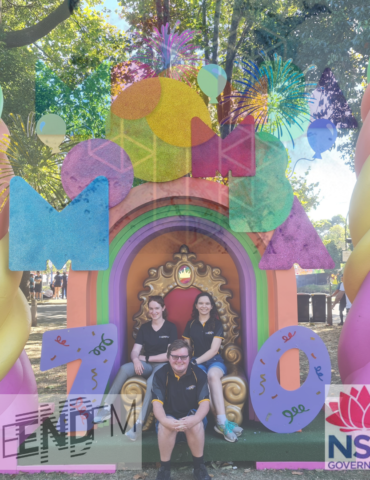The Australasian Bittern

An insight into the Biology, Habitat and Conservation of the endangered Australasian Bittern from the perspective of some some of Hay War Memorial High School’s Year 8 students. This podcast was created in conjunction with THE END FM, Petaurus Education Group Inc. and Hay War Memorial High School.
Transcript:
(INSTRUMENTAL POP MUSIC)
(Voice Over) KODI SCOTT: Hello and welcome to our podcast from Hay War Memorial High School. I am Kodi Scott, and today my friends and I will be informing you about the very special and endangered species called the Australasian Bittern. Today we are joined by Hope, Savannah and Faith. We are also lucky to have experts Neil Bull from Rice Growers Association, and Leeton farmer Scott Williams joining us.
(INSTRUMENTAL POP MUSIC)
KS: Today I will be informing you about the biology of the Australasian Bittern. The bittern is brown and has a bulky body. It makes a very strange sound sort of like a deep booming sound that can be heard up to a few kilometres away, and they like to eat small animals that live near the water or in the water. Here to explain it further is Neil Bull from the Rice Growers Association.
(INSTRUMENTAL POP MUSIC)
KS: Hi, Neil, thanks for joining us.
NEIL BULL: My pleasure.
KS: What is an Australasian Bittern and what does it look like?
NB: The Australasian Bittern, it’s a type of a heron, a water bird. It’s quite a heavy bird or heavy set quite a bulky body, and it’s partially nocturnal so it is certainly active at night but you will see it moving in the daytime if you’re lucky enough. They often put their neck and have a long neck and stretch out so when they do that they’re about up to a metre tall with the males a bit bigger than the female. The upper parts of the body is patterned which is in dark brown and kind of an orangey brown colour and black, and with their underparts are kind of streaked, brown and a lighter brown or buff colour. Their eyebrows and throat are pale in colour and the side of the neck is dark brown. The bill is also brown and their legs are long and greenish in colour. The way they are with their length is suitable to walk around wetlands. They are very hard to, hard to spot because of their colouring and the fact that they don’t actually like to show themselves very much so they like to hide in the vegetation.
KS: The Australasian Bittern has a very distinct sound can you describe the sound they make?
NB: I liken it to the sound of a foghorn across water. It’s kind of a booming sound seems to come from deep in the chest of the male bittern and it’s it’s quite an eerie sound. Some people try to imitate the sound by blowing air across an empty soft drink bottle. And it can make a similar kind of booming, deep sound.
KS: Are the Bitterns fussy with what they eat?
NB: They particularly like frogs, and sometimes endangered Southern Bell frogs, they eat small fish, particularly European Carp, yabbies, they will eat mice and other insects, they’ll eat small lizards that are near the banks and the edges. So look just generally, the smaller food that’s in around our wetlands and rice crops. They like to eat that.
KS: Thanks for joining us Neil.
NB: It’s my pleasure.
KS: It is really important for us to understand this bird so we can help save it for future generations. Thank you for listening. I’m Kodi Scott.
(INSTRUMENTAL POP MUSIC)
HOPE JOB: Hi, I’m Hope Job from Hay War Memorial High School and I’m in Year 8. Today I’ll be talking about the habitat of the Australasian Bittern. The Australasian Bittern is a very secretive bird that uses camouflage very well in wetlands filled with reeds, rushes and rice fields. They’re actually found right here in the Riverina, often in rice fields and local wetlands and found in south east Australia, New Caledonia and New Zealand. The total population is about 1300 with the majority of them breeding between November and April, when water comes on local farms and ecosystems. Joining Savannah now is local rice farmer Scott Williams to discuss his experience with the Australian Bittern on his farm.
SAVANNAH MOHR: Hi I am Savannah Mohr and today I would like to welcome Scott Williams, a local farmer from Leeton, to talk with us about the habitat of the Australasian Bittern. Good afternoon, Scott. So tell me what kind of habitat are the bittern found in.
SCOTT WILLIAMS: G’Day. The bittern is a swamp dwelling bird. They prefer reeds and permanent water for their food source.
SM: And why do the bitterns like wetlands and rice fields?
SW: Well, the rice fields for the bittern is the ideal food source, that that breeds a lot of frogs and other small invertebrates and it also provides them with cover that they can hide in in. Cause they are a bird that likes a bit of secrecy.
SM: How many times have you spotted the bittern on your farm?
SW: We’ll see a bitten every rice season but you won’t see them every day. And then at the end of the harvest in April, May, they must somewhere, you won’t see them again until October when we start the rice again.
SM: I understand that you have water coming onto your rice property early to support the breeding season of a bittern. Why are you so interested in the bittern?
SW: I’m interested in all birds really, I’m a bit of a bird man. And I see this as a way that we can justify farming, give us some social licence. So it’s a little bit selfish on my behalf really but I am concerned with the bittern’s endangered status as well.
SM: Thanks for joining us, Scott.
SW: Thank you.
(INSTRUMENTAL POP MUSIC)
HJ: Having the right kind of habitats will have a huge impact on the future of this endangered species. Thank you for listening, I’m Hope Job.
(INSTRUMENTAL POP MUSIC)
FAITH KENNEDY: Hi, I’m Faith Kennedy and I’m in Year 8 at Hay War Memorial High School. Today I’m speaking about what we can do to help the Australasian Bittern. So how has drought affected the population numbers? Drought is a problem because we need more water so they have more habitat to breed in as the numbers of the bittern in Australia is going down. The bittern lives on rice farms, so we need to make sure there is more water on these farms. If we can protect their breeding sites, then their numbers can increase. We need to make sure that we control the numbers of foxes in breeding areas as they are predators to the bittern. But why do rice farmers have so many bitterns on their farms? The habitats on rice farms are a perfect environment for the bitterns. Riverina rice crops are helping to protect the endangered bitterns, providing that agriculture and the environment can work together. Now joining us again is Neil Bull from the Rice Growers Association, speaking about the issue and how we can turn things around.
(INSTRUMENTAL POP MUSIC)
FK: Hi, Neil, thank you for joining me today. You’re speaking with Faith.
NB: Hi Faith. It’s my pleasure to join you today.
FK: What will happen if something doesn’t change for the bittern?
NB: We’re already doing a bit of work to help the Australasian Bittern. It’s not just the work we’re doing the rice fields as well to work with our farmers, but it’s also there’s been quite a bit of rehabilitation work happen with some of the more natural wetlands across Australia, particularly southern Australia. So we’ve seen some revegetation work of some of these wetlands, vegetation that particularly suits Australasian Bittern, and also the application of environmental water to these sites to try and time it in the best possible way to provide food for the bitterns and also give them a chance to breed in some of these habitats. So the good news is there are things happening, and things are improving for the Australasian Bittern, but of course, we’ve got much more work to do.
FK: What are some of the things we can do to fix this problem?
NB: You know, we need to manage some of our natural wetlands in the best way we can, as I described with environment water and revegetation, maybe controlling grazing and pest species and those. But we also have the opportunity to work in what may be some still quite natural or modified wetlands that occur across our farming landscape. And these can also receive environmental water through irrigation infrastructure in particular, and have some habitat work done to them. But also we can actually know, tweak our rice farming systems, and our irrigation systems to create surrogate wetland habitat for the bittern. It’s not traditional natural habitat but very effective wetland habitat for the bittern.
FK: Thank you.
NB: Thank you.
(INSTRUMENTAL POP MUSIC)
FK: Education is important in helping save endangered bittern. If more people are aware of this problem, then we can all find ways to help save this bird. Thank you for listening with Faith Kennedy.
(INSTRUMENTAL POP MUSIC)
(Voice Over) HJ: The Australasian Bittern is a very interesting bird. We hope this podcast has given you an insight into how we can help save this special bird in the Riverina. Thank you for listening, you have been joined by Kodi Scott, Faith Kennedy, Savannah Mohr and myself Hope Job
(INSTRUMENTAL POP MUSIC)
CREDITS: OLIVIA DUFFEY: THIS PODCAST WAS MADE AT THE HAY WAR MEMORIAL HIGH SCHOOL PRODUCED BY STUDENTS SAVANNAH MOHR, KODI SCOTT, FAITH KENNEDY AND HOPE JOB, WITH MUSIC BY ANTTI LUODE. ALSO THANKS TO SAMANTHA DAVIES FROM THE PETAURUS EDUCATION GROUP, DAVID KERR FROM HAY WAR MEMORIAL HIGH SCHOOL, BROOKE DOUGHTY FROM SOUTH WEST ARTS AND OLIVIA DUFFEY FROM THE END FM. TO HEAR MORE FROM HAY WAR MEMORIAL HIGH SCHOOL, VISIT ENDFM.COM.AU AND CHECK OUT THE PODCAST SECTION.


